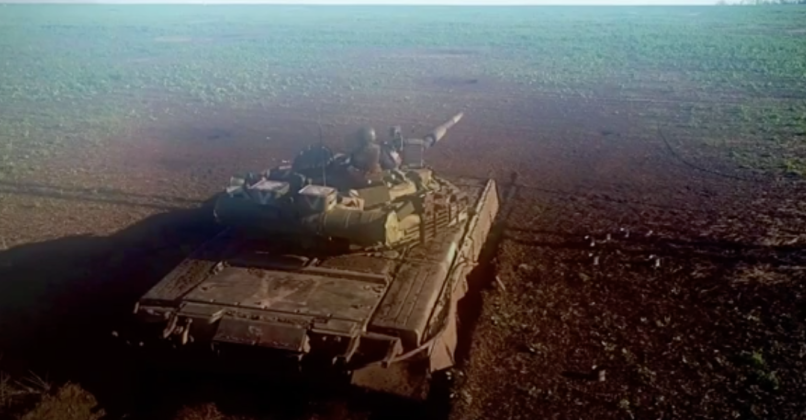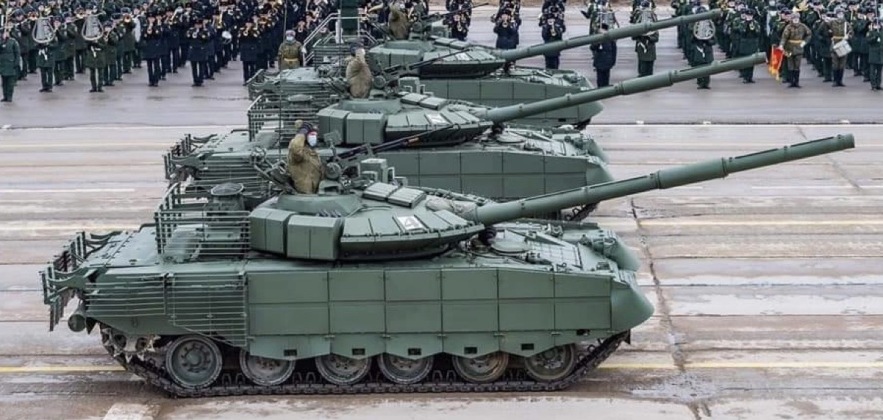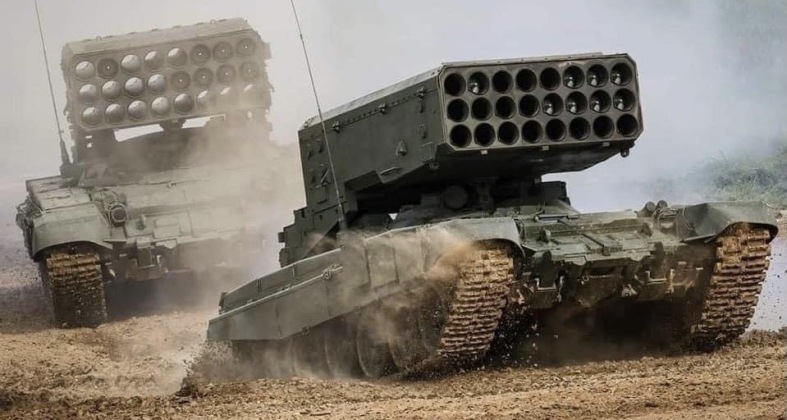News
What is the Omsk Tank Factory at the Centre of Russian MoD Inspections – And Why Isn’t It Producing Any Tanks?
Russian Defence Minister Sergei Shoigu visited the country’s Omsktransmash (Omsk) on June 17 to oversee the fulfilling of the state defence order, with the Defence Ministry reporting that he: “has inspected the implementation of the state defence order at a plant in the Omsk Region that specialises in the production of tanks and heavy flamethrower systems.” Shoigu emphasised the importance of further expansion of Russia’s capacity to produce tanks and heavy flamethrower systems, which are based on the chassis of T-72 tanks, and informed administration at an unnamed facility that the State Defence Order had to be fulfilled strictly on schedule. The minister further stressed that it was vital to pay special attention to increasing crew protection, which was in line with the increasing levels of armour protection seen on new generations of Russian tanks being deployed from the latter half of 2022. Shoigu further checked the state of the hardware in Omsk Region being prepared to be dispatched to frontline units. The Omsktransmash tank factory, which is by far the largest military industrial facility in the region and one of the largest in Russia, was inevitably a key focus of the defence minister’s visit.

Omsktransmash was one of five major tank producing facilities in the Soviet Union during the Cold War, and one of the three largest alongside the Uralvagonzavod factory located in the Ural Mountains, and Malyshev located in present day Ukraine.The facility produced T-54/55 tanks for most of the Cold War and was the last facility still doing so by the late 1970s, albeit by then exclusively for export, before converting to produce the much more complex T-80 tank which was by far the most costly and most capable in the Soviet inventory. As one of the very largest tank factories in the world, it remained the only one producing T-80s until 1988 when the Malyshev factory also converted from T-64s to T-80s. Malyshev, however, largely focused on a diesel powered version of the T-80 with lower production and operational costs where Omsktransmash had produced the original gas turbine powered variant with superior mobility and cold weather performance – but which was arguably less cost effective. The shift in production from the T-55 to the T-80 was extreme, as not only where they at opposite ends of the spectrum in terms of cost and complexity, but the T-55 was built solely for export while the T-80 by contrast was not offered for export at all.

After the disintegration of the Soviet Union orders for T-80 tanks were negligible, with the sharply contracting Russian Army fielding far larger quantities of the vehicles than required, and selling off much of its own stocks to almost any export clients that were willing from South Korea to Cyprus. As Ukraine inherited the Malyshev factory, the bulk of its inventory of tanks, both completed and partially completed, were used to meet a Pakistani order made in 1996 for 320 T-80s, with the factory’s productive capacity subsequently diminishing to close to zero. Although the T-80 was the Soviet Union’s most potent tank, and the latest T-80UK variant from 1991 was a very close contender for the title of the world’s most capable tank in terms of overall combat performance, the class’ much higher production and operational costs led both the Russian Army and the large majority of foreign clients to favour the much cheaper and arguably more cost effective T-72. The latest variant of the T-72, the T-72BU, was subsequently renamed the T-90 and marketed both to the Russian Defence Ministry and abroad, with the later improved T-90A model from the early 2000s proving a major export success.

After the USSR’s disintegration Omsktransmash was among the more successful Russian factories in reorienting towards civilian production, while also providing refurbishment for Soviet era vehicles and offering new upgrade packages for the T-55 and T-80. An ambitious T-80 derivative was also developed under the Black Eagle program with advanced next generation features including an unmanned turret, although when this failed to attract either domestic or foreign interest the fate of the facility’s tank production was effectively sealed. The firm filed for bankruptcy in the early 2000s and saw its tank related facilities absorbed into Uralvagonzavod. Due to export orders for the T-90 mainly from India and Algeria Uralvagonzavod remained the most active tank factory in the world – and the only one in the former Soviet Union still producing tanks. Despite this, until 2019 when the first T-90M tanks were delivered to the Russian Army, enhanced variants of the T-80 were still considered the most capable tanks in the Russian Army.

The Russian Army would in the 2010s reportedly seriously consider phasing the T-80 out of service entirely, and reduced the proportion of the vehicles in service considerably in favour of bringing more T-72s out of reserves due to their lower operational costs. The T-80 was ultimately spared from retirement primarily due to its high suitability for extreme weather conditions due to its gas turbine engine, which made it an optimal tank for operations in Russia’s vast Arctic regions. Thus although Russia has reportedly moved to increase tank production to well over 1000 per year to meet the demands of war in Ukraine, Omsktransmash is not expected to play a role in this. The facility is expected to instead continue to be a centre for modernising and refurbishing the thousands of military vehicles including tanks and mobile artillery pieces being brought out of service to meet the needs of the Ukrainian front, as well as converting T-72 tank chassis into TOS-1A flamethrower vehicles which are in particularly high demand due to their unique capabilities.












